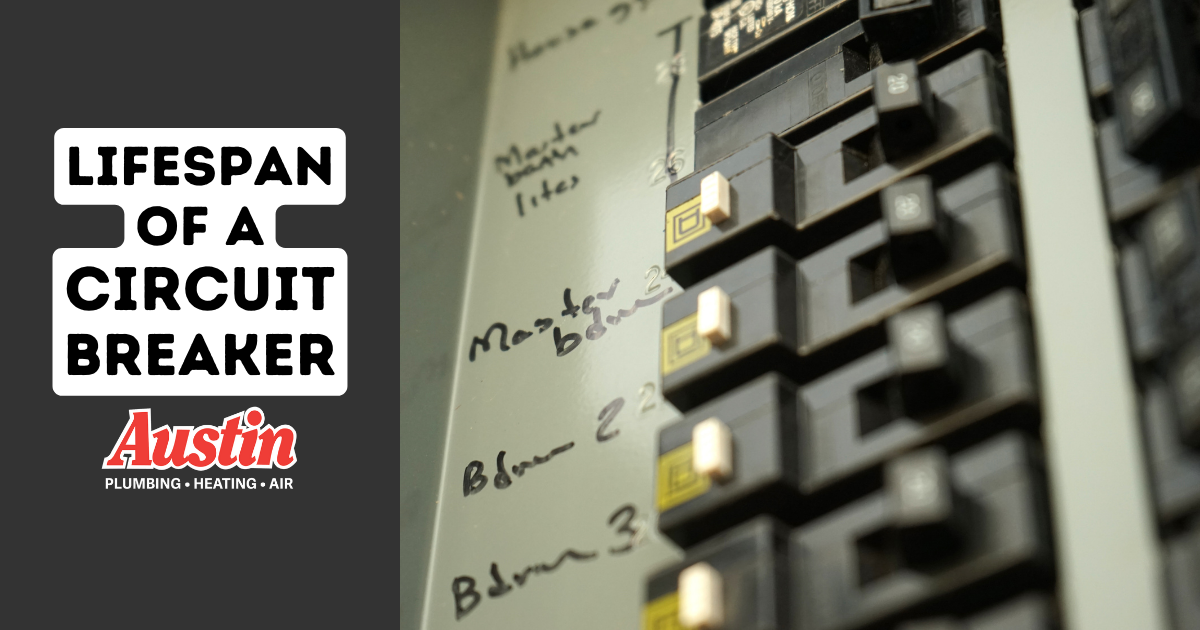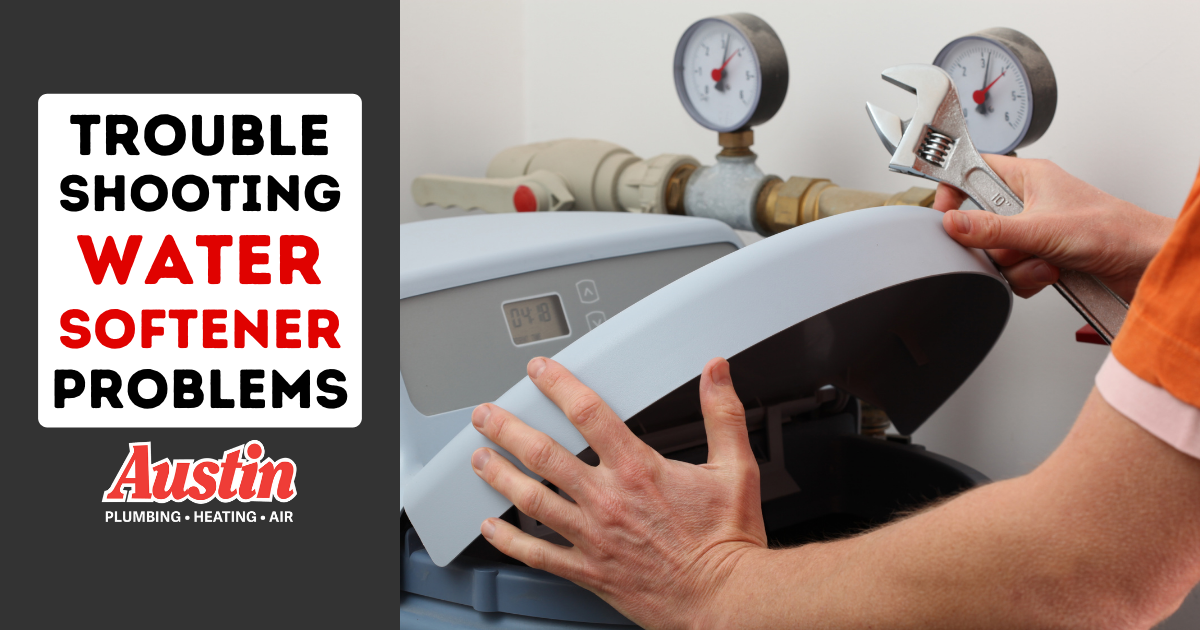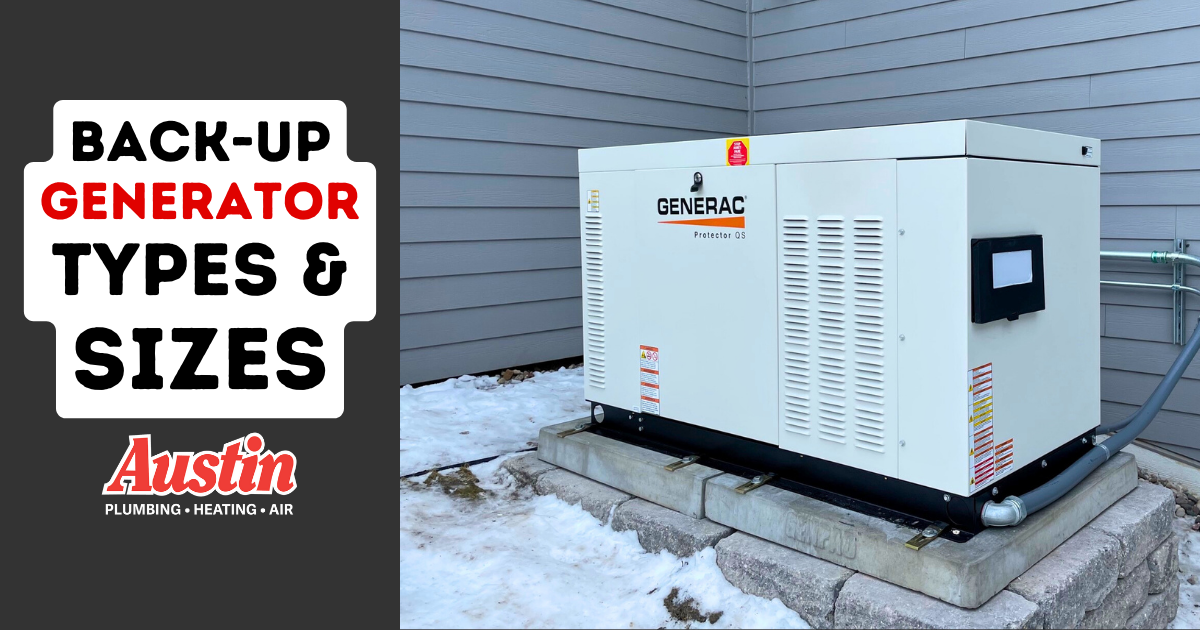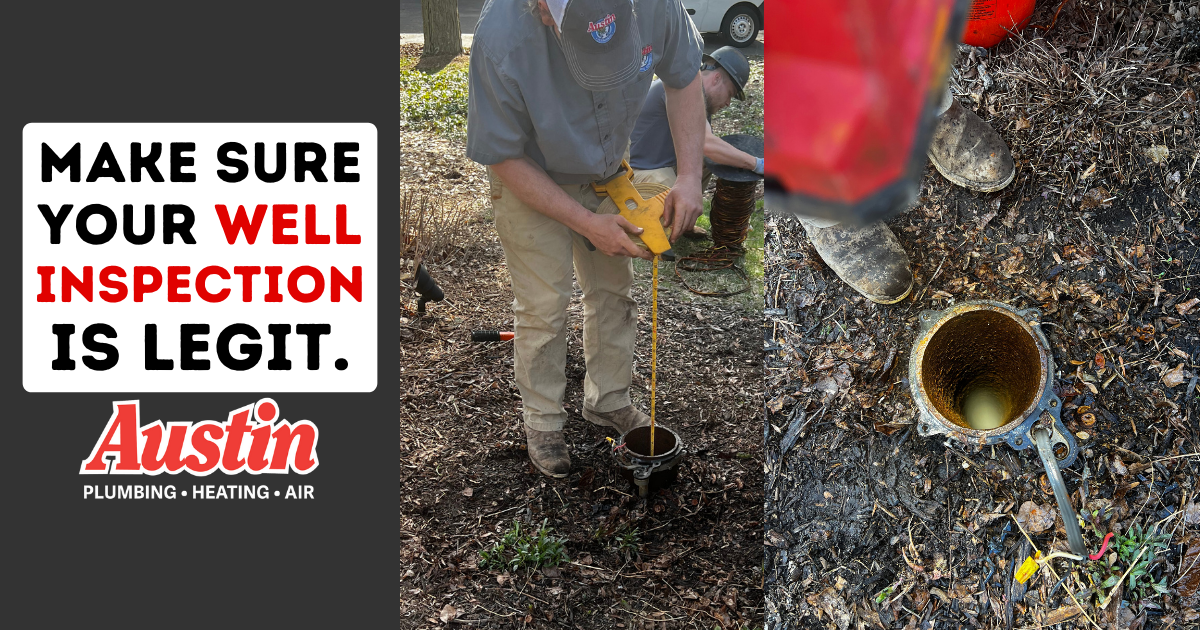Why Do Circuit Breakers Trip? Common Reasons + Next Steps
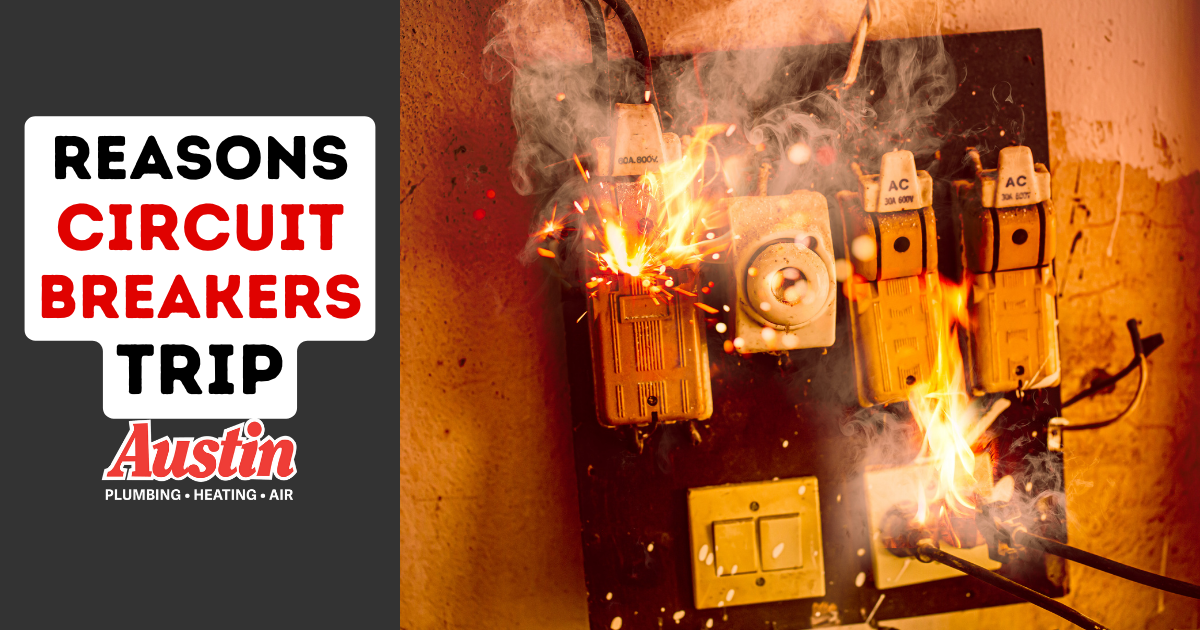
No power at certain outlets? You may find your circuit breaker tripped. But why? And is it safe to turn back on? Our Master Tradesman responds.
Is it safe to reset a circuit breaker?
It is safe to reset a circuit breaker only if the breaker was tripped by an overloaded circuit, which we will get to later in this article. Resetting a breaker repeatedly can become a safety hazard due to arcing. If your circuit breaker is tripped and won’t reset, you will need a qualified electrician to investigate and troubleshoot the cause of the problem.
How to reset a tripped circuit breaker
A tripped breaker doesn’t always look tripped. Most breakers have a red or orange indicator showing that it has been tripped. Here are a few things to know before resetting the tripped circuit.
SAFETY TIP: Touch the electric panel using only one hand
- A breaker handle that is pointed to the outer edge of an electrical panel is off
- A breaker handle that is pointed towards the centerline of the electrical panel is on
- A breaker handle that is in the center is tripped
Follow these steps to reset a tripped breaker:
- First, slide the breaker handle all the way towards the outside edge of the panel
- Next, slide the breaker panel towards the center of the electrical panel
- The handle should stay on
- If you hear it the breaker trip again or if it returns to the center, call for service
How does a circuit breaker work?
A home’s circuit breaker serves a very important purpose by installing shut offs or cutting the power to circuits in the home. Without a working circuit breaker, routine and normal electrical failures could turn into a fire or cause electrocution. The inner workings of the circuit breaker are quite complicated, but this electrical safety device works by instantly shutting off the power to prevent electrical hazards and fires that can result from overloaded circuits or shorts in electric wires.
- An average home has 15-25 circuits
- Some circuits in a home are dedicated, which means only one electrical consuming appliance is on that circuit. Common examples with dedicated circuits would be electric ovens, well pumps, water heaters and air conditioners.
- Each circuit in the home is protected by a circuit breaker
- The circuit breaker in the electric panel also serves as a handy on/off switch for the area of the house it serves
- Circuit breakers should be labeled so you know the general area served by the breaker
The main circuit breaker: What can cause it to trip?
Sitting above all of the individual circuit breakers in a panel is the main circuit breaker. This breaker is one that controls the power to the entire home and any subpanels in the home after the main breaker. The main breaker also acts as a throttle, limiting the amount of total electricity usage of your home. Lightning strikes and other power surges coming from the electric grid are typically causes of a main breaker tripping, but on rare occasions an issue inside the breaker panel can cause issues with the main breaker.
Next steps if the main breaker is tripped
Whole home surge protectors are a great investment if you commonly find the main breaker of your home tripped. They can also prevent electrical emergencies and emergency repairs. These surge protectors work to absorb the power surge so further damage to the electrical system and your home’s electrons is prevented.
Failed Circuit Breakers
Circuit breakers have a useful life of around 30 years and are under use and strain anytime there is a load on the electrical current that they serve. Circuit breakers also get warm and over time the mechanism inside the breaker wears and will eventually fail or trip for no reason. Common causes of a faulty breaker are overuse of the breaker (turning on and off a circuit often) and an overloaded circuit that doesn’t quite trip the breaker. If you have simultaneous use of high draw electrical motors and frequent overload happening on a circuit, this will cause failure as well.
- Water damage causes breaker failure
- Frequent usage of the breaker will cause wear
- Constant overload on the circuit will eventually cause the breaker to fail
- Loose wire connections at the breaker or inside the panel can cause overheating and fire
- Failed breakers can make it seem like you have a circuit overload or shorts even if you don’t
What to do if your circuit breaker is faulty
Replacement of a circuit breaker should only be done by a qualified electrician and is very dangerous. Because of this, if you suspect a failed circuit breaker, you should call Austin Plumbing, Heating, Air & Electric for evaluation and repair.
Overloaded Circuits
By far the most common cause of tripped circuit breakers is an overload in that circuit. Each electrical load that is on a circuit (outlet, light, appliance) has a total potential power draw while the circuit is being used. Wire also has load ratings. The circuit breaker’s job is to sense the load on the circuit and to interrupt or trip if the load gets too high. The reason for this is to protect the wire from starting on fire or getting hot and causing safety issues. When too much power travels through the circuit, danger increases.
Overloads are very common and usually easy to identify. If the circuit tripped when you started using an electrical appliance, then it’s likely that a combination of all of the electrical devices being used caused a simple overload.
Next steps if you have an overloaded circuit
Unplug or turn off the electric component that you think caused the system to overload and reset the breaker. If the breaker resets and everything seems fine, then you chalk up this breaker trip to an overloaded circuit breaker. If on the other hand the breaker trips again, something else may be going on.
The key to resolving an overloaded breaker is to lessen the load on it and the circuit it serves. Ways to do this include finding alternative places to plug in appliances, such as vacuums, and if you have several plugs running to the same outlet, consider using outlets in different areas of the home.
Short Circuits
A short circuit, or a dead short as many electricians call it, is a condition where two hot wires are touching together or touching something else metal. These short circuits can happen in jacketed wire, in electrical junction boxes, inside the panel or in the electrical appliance or equipment. Almost all residential home wiring utilizes three wires in order to make electricity work properly. One wire is live or also called hot (and covered with a black jacket), the second wire (covered with a white jacket) is called the neutral wire, and a bare copper ground wire.
What happens when the hot wire touches something it shouldn’t? This eliminates the electrical resistance and allows too much current to flow through the wire, which overloads the circuit breaker.
Many parts of the electrical system can be to blame for a short circuit, but loose wire connections, failed appliance cords, and damage to internal home wiring are among common causes we find.
Short circuits are dangerous because of the sparks that occur. It is quite common to see smoke, and the potential for a house fire due to a short circuit is high. If you happen to be touching the metal that the hot wire is shorting to, you run the risk of being burnt and electrocuted. If you see char marks on any electrical component, use caution!!!
Next steps for a short circuit
Because of the danger associated with a short circuit, a professional electrician should be called in to troubleshoot the root cause of the short.
Grounded Fault Surge
A ground fault surge is a specific type of short circuit that occurs when the black hot wire touches the ground wire or something metal in the electrical or plumbing system that ground wire is connected to.
Grounded faults are caused by the same thing that causes many shorts. Either the insulation on the wire is damaged or a connection gets loose allowing the hot wire to touch the ground.
From a safety point of view, ground faults can be more dangerous than short circuits, especially when the fault is caused by water. Modern homes and modern electrical code requires electrical outlets near water be protected with a special type of ground fault interrupter called a GFCI. GFCI stands for Ground Fault Circuit Interrupter. The code says that any outlet within six feet from a source of water must use a GFCI outlet. GFCI’s are commonly found in bathrooms, outdoor receptacles, kitchens, near sump pumps and in garages and basements.
GFCI’s provide an extra level of protection against grounded fault surges and are a critical safety component of modern electrical systems.
How to handle a tripped GFCI
GFCI receptacles are equipped with a reset. If you find the GFCI tripped, try simply resetting the outlet to see if that works. If pressing the reset button or test button several times does not restore the problem, call Team Austin for help.
Aged or Damaged Wire
The wire that carries the current from your electrical panel to the electrical appliance (aka load) has to be properly sized, properly insulated and installed correctly to prevent circuit breaker tripping and other electrical issues in the home. In very old homes, the wire insulation becomes degraded and brittle, which can cause various types of electrical shorts. As we learned earlier, this will cause the breakers to trip. Over the years as the electrical industry has improved, the flow of electricity with the quality of wire, wire nuts and other fasteners has also gotten better. If you have an old electrical system that has worn significantly and you continually have tripped breakers, you may consider a whole home rewire.
Next steps for aged or damaged wire
If you simply have damaged wire in a small area, the electrical pros at Austin Plumbing, Heating, Air & Electric can repair it in a cost effective manner. However, an aged or obsolete electrical system that involves rewiring a whole home or a section of the home will require design and a comprehensive plan for the best outcome. Both wire repairs and wire replacement is best suited for licensed electricians.
SE Wisconsin’s Electrical Experts & Full Trades Service
Austin Plumbing, Heating, Air & Electric has been solving the comfort, power and water problems of SE Wisconsin for over 80 years. If you’re having troubles with your electrical system or any other system in your home, you can trust the professional electricians at Team Austin for upfront pricing, honest recommendations and electrical repairs and replacements that will stand the test of time. Learn more about our electrical services on our electrical services main page or call 262-367-3808.

